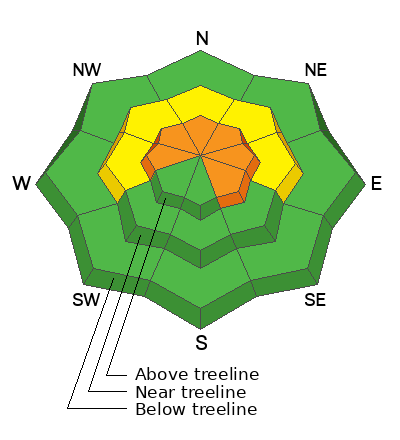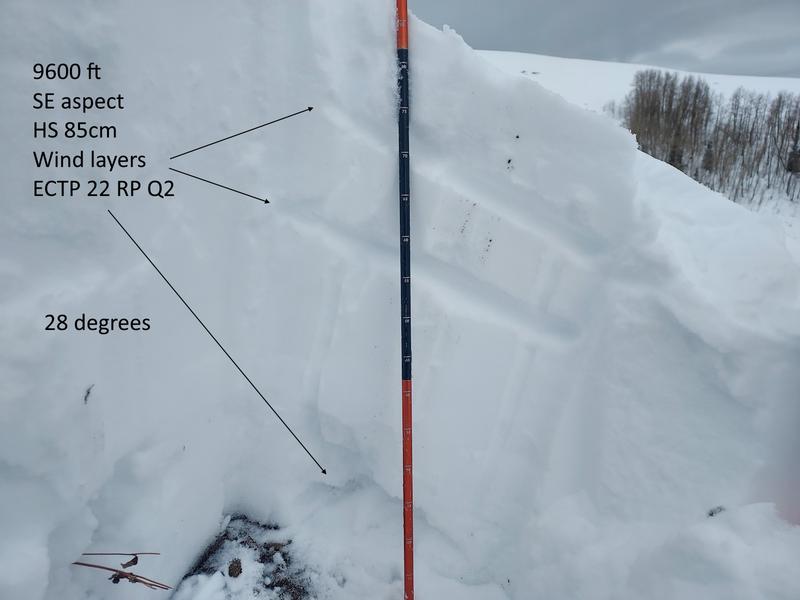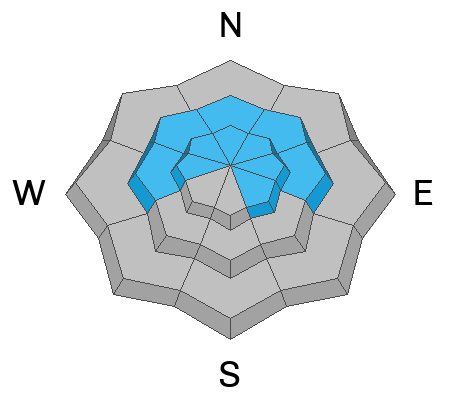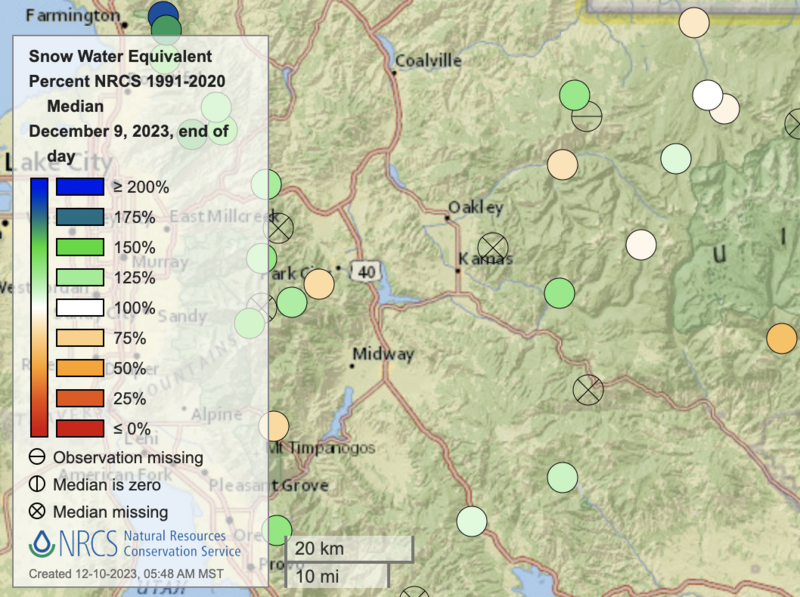Forecast for the Uintas Area Mountains

Issued by Mark Staples on
Monday morning, December 11, 2023
Monday morning, December 11, 2023
The snowpack in the western Uintas is in a holding pattern. Old, weak snow from November remains capable of fracturing and producing a slab avalanche 1-2 feet deep. While this persistent weak layer is losing its sensitivity, it remains dangerous, and the avalanche danger above treeline where this layer exists is CONSIDERABLE. Slopes near treeline where this layer exists have a MODERATE danger.
The danger is LOW below treeline at low elevations and on all south and southwest-facing slopes.

Low
Moderate
Considerable
High
Extreme
Learn how to read the forecast here






